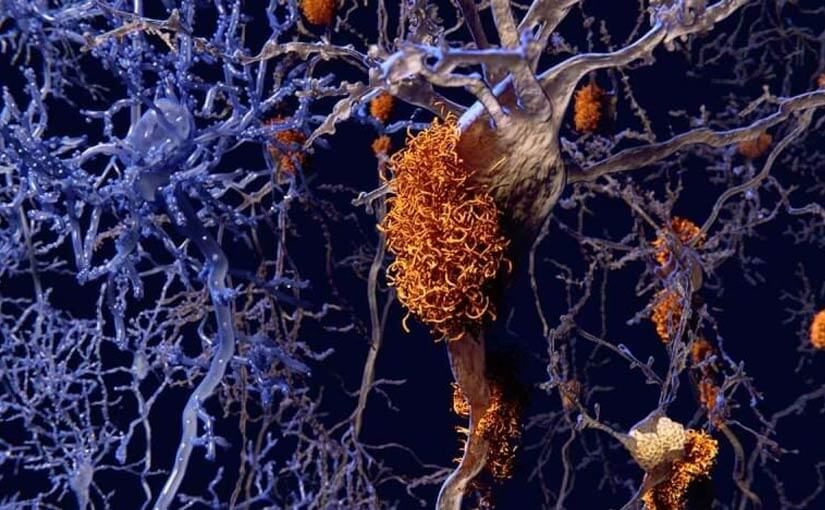According to the Australian Bureau of Statistics dementia is now the leading cause of death for Australian women, overtaking heart disease, and the second leading cause overall. Since 2011 the number of deaths from dementia has risen from 9,864 (6.71%) to 13,126 (8.28%). This increase makes sense given improvements in outcomes for other diseases and an aging population – but what is being done to tackle the issue and how can pathology play a role?
Dementia refers to a group of neurodegenerative diseases including Alzheimer’s disease, frontotemporal dementia, and vascular dementia. Neurodegeneration is the progressive loss of structure or function of neurons – the building blocks of the nervous system. The most common form of dementia, responsible for 60% – 80% of cases, is Alzheimer’s disease.
Alzheimer’s disease occurs when a protein called beta-amyloid accumulates in the brain. When this protein reacts with copper and iron, which are found in high levels in the brain, a chemical reaction similar to rusting occurs and this damages brain cells so that they can no longer effectively transmit information.
Diagnosis and the role of research
A 100% accurate diagnosis of Alzheimer’s can only be made after death when brain tissue can be analysed under a microscope by a pathologist. There are tests that can diagnose early and fully-developed Alzheimer’s, including PET scans or a lumbar puncture, when a sample of spinal fluid is taken from a patient and measured for the beta-amyloid protein. But these are expensive and invasive procedures, so usually a diagnosis will be made without them, relying on a full medical and psychological assessment by a doctor.
Despite the increase in deaths we still don’t know enough about Alzheimer’s, and great effort is being taken around the world to research what contributes to the condition, possible preventative measures we could take, and potential new treatments.
For example, several studies have emerged recently about the positive effects of exercise in staving off Alzheimer’s. Ongoing research known as ‘the nun study’ is using the brains of a group of nuns to determine factors that may predict, contribute to, or protect against the development of the disease. This research is unique in having access to a group of people with almost identical lifestyles, diets and sleeping habits, providing near perfect control measures.
However, accurate, non-invasive, early detection of Alzheimer’s remains a vital area of research and Australia is leading the way.
A study published in Nature journal earlier this month by a team of Australian and Japanese researchers looked into a potential new blood test to diagnose the disease.
Although beta-amyloid protein build-up is one of the first signs of Alzheimer’s it only appears in the blood in very small amounts, so testing for it has historically proved difficult. The latest researchers used a process involving mass spectrometry which allowed them to more accurately measure very small fragments of the protein in blood samples. They found that the blood test results correlated well with the traditional methods of lumbar puncture and PET scan.
How does this finding help patients?
Initially the blood test will be most significant in recruiting patients for clinical trials. The ability to test volunteers with a blood test rather than an invasive procedure will make it easier to recruit more people, which is vital in the hunt for treatments.
Many major media outlets have been heralding the test as a new option for screening, but this is still a long way off. Firstly, it needs to be trialled over many years to see if it is accurate as a predictor. And secondly, given there is no cure for Alzheimer’s there is an ethical concern over telling a person they will develop a disease that they can do nothing about.
Laureate Professor Colin Masters of the Florey Institute of Neuroscience and Mental Health, and The University of Melbourne, co-led the research into the blood test. He said;
“Progress in developing new therapeutic strategies for Alzheimer’s disease has been disappointingly slow. New drugs are urgently required, and the only way to do that is to speed up the whole process.
Once you can diagnose the condition accurately and specifically, then it makes it so much easier to work on developing a specific therapy.”

